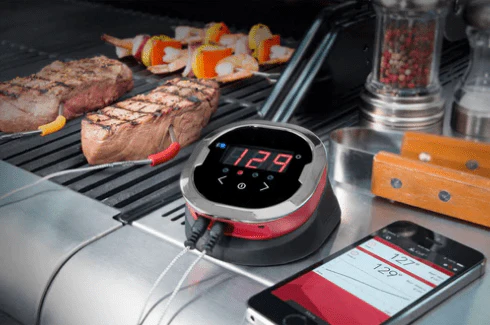Çewtiya formata e-nameyê
emailCannotEmpty
emailDoesExist
pwdLetterLimtTip
inconsistentPwd
pwdLetterLimtTip
inconsistentPwd


The Comprehensive Guide to Digital Temperature Sensors
Digital temperature sensors have revolutionized the way we monitor and control temperatures in various applications. From industrial processes to consumer electronics, these sensors offer precision, reliability, and ease of use. In this comprehensive guide, we'll explore everything you need to know about digital temperature sensors, including their types, applications, and benefits. We'll also touch upon the tpe temperature sensor, a specific type of digital sensor, to provide a complete understanding of this critical technology.
What is a Digital Temperature Sensor?
A digital temperature sensor is a device that measures temperature and converts the data into a digital signal. Unlike analog sensors, which produce a continuous voltage signal proportional to the temperature, digital sensors provide discrete digital values that represent the temperature. This digital output can be easily interfaced with microcontrollers, computers, and other digital systems.
How Digital Temperature Sensors Work
The sensors typically consist of a temperature-sensitive element, such as a thermistor or a diode, and an analog-to-digital converter (ADC). The temperature-sensitive element changes its electrical properties in response to temperature variations. The ADC then converts these changes into a digital signal that can be read by a digital device.
Advantages of Digital Temperature Sensors
1. Precision: Digital sensors provide highly accurate temperature measurements with minimal error.
2. Ease of Integration: The digital output can be easily interfaced with modern digital systems.
3. Reliability: Digital sensors are less susceptible to noise and signal degradation compared to analog sensors.
4. Versatility: They can be used in a wide range of applications, from industrial automation to consumer electronics.
Types of Digital Temperature Sensors
The sensors come in various types, each designed for specific applications and environments. Here are some of the most common types:
1. Thermocouples
Thermocouples are widely used for their wide temperature range and fast response time. They consist of two dissimilar metals joined at one end, producing a voltage proportional to the temperature difference between the joined end and the open ends.
2. Resistance Temperature Detectors (RTDs)
RTDs are known for their high accuracy and stability. They use a metal (usually platinum) whose resistance changes predictably with temperature. The digital sensor reads this resistance and converts it into a temperature value.
3. Thermistors
Thermistors are temperature-sensitive resistors made from semiconductor materials. They are highly sensitive and can detect small temperature changes, making them suitable for applications requiring precise temperature control.
4. Infrared Sensors
Infrared temperature sensors measure the thermal radiation emitted by an object. They are non-contact sensors, making them ideal for measuring the temperature of moving objects or objects that are difficult to reach.
5. Semiconductor Temperature Sensors
Semiconductor sensors use the temperature-dependent properties of semiconductor materials to measure temperature. They are compact, cost-effective, and suitable for integration into electronic circuits.
Applications of Digital Temperature Sensors
The sensors are used in a wide range of applications due to their accuracy, reliability, and ease of integration. Here are some of the key applications:
1. Industrial Automation
In industrial settings, the sensors are used to monitor and control processes such as chemical reactions, manufacturing operations, and HVAC systems. Their precision ensures that processes remain within safe and optimal temperature ranges.
2. Consumer Electronics
The sensors are found in smartphones, laptops, and other electronic devices to monitor and manage internal temperatures. This helps prevent overheating and extends the lifespan of the components.
3. Healthcare
In the medical field, the sensors are used in devices like digital thermometers, incubators, and patient monitoring systems. Their accuracy is critical for ensuring patient safety and effective treatment.
4. Automotive
Automobiles use the sensors to monitor engine temperatures, climate control systems, and battery temperatures in electric vehicles. This helps optimize performance and enhance safety.
5. Environmental Monitoring
The sensors are employed in weather stations, greenhouses, and environmental monitoring systems to track temperature changes and ensure optimal conditions for plant growth and climate studies.
The TPE Temperature Sensor
Among the various types of digital temperature sensors, the sensor stands out for its unique properties and applications. TPE, or Thermoplastic Elastomer, sensors combine the flexibility of elastomers with the thermal properties of thermoplastics. This combination makes them highly versatile and suitable for applications where both flexibility and thermal sensitivity are required.
Advantages of TPE Temperature Sensors
1. Flexibility: TPE sensors can be molded into various shapes and sizes, making them ideal for applications with space constraints.
2. Durability: They are resistant to chemicals, water, and physical wear, ensuring longevity in harsh environments.
3. Precision: TPE sensors provide accurate temperature measurements, even in applications with fluctuating temperatures.
Applications of TPE Temperature Sensors
The sensors are used in a variety of industries, including automotive, consumer electronics, and healthcare. For example, they are used in car seat heaters, wearable health monitors, and flexible electronic devices.
Benefits of Using Digital Temperature Sensors
Digital temperature sensors offer numerous benefits that make them a preferred choice in many applications. Here are some of the key benefits:
1. Enhanced Accuracy
Digital sensors provide precise temperature readings, which are crucial for applications requiring exact temperature control. This accuracy helps improve the efficiency and safety of various processes.
2. Improved Reliability
Digital temperature sensors are less affected by electrical noise and signal degradation, ensuring consistent and reliable performance. This reliability is essential for critical applications such as medical devices and industrial automation.
3. Easy Integration
The digital output of these sensors makes them easy to interface with microcontrollers, computers, and other digital systems. This simplifies the design and implementation of temperature monitoring and control systems.
4. Wide Range of Applications
From industrial processes to consumer electronics, the sensors are versatile and can be used in various applications. Their ability to provide accurate and reliable temperature measurements makes them indispensable in many fields.
5. Cost-Effective
The sensors are generally cost-effective, especially when considering their accuracy, reliability, and ease of integration. This makes them an economical choice for both large-scale industrial applications and consumer products.
Choosing the Right Digital Temperature Sensor
Selecting the right digital temperature sensor for your application involves considering several factors, including the required accuracy, response time, temperature range, and environmental conditions. Here are some tips to help you choose the right sensor:
1. Determine the Required Accuracy
Consider the level of accuracy required for your application. High-precision applications, such as medical devices or scientific research, may require sensors with very low error margins.
2. Evaluate the Temperature Range
Ensure the sensor can operate within the temperature range of your application. Some sensors are designed for extreme temperatures, while others may have a more limited range.
3. Consider the Response Time
The response time of a sensor is critical in applications where temperature changes rapidly. Ensure the sensor can provide timely measurements to meet your needs.
4. Assess the Environmental Conditions
Consider the environmental conditions in which the sensor will operate. Factors such as humidity, exposure to chemicals, and physical wear can impact the sensor's performance and lifespan.
5. Integration and Compatibility
Ensure the sensor is compatible with your existing systems and can be easily integrated into your application. This includes checking the communication protocols and power requirements.
Conclusion
Digital temperature sensors are essential components in many modern applications, offering accuracy, reliability, and ease of integration. Understanding the different types of sensors, their advantages, and their applications can help you choose the right sensor for your needs. The sensor, with its unique combination of flexibility and thermal sensitivity, is a prime example of the innovative solutions available in the field of digital temperature sensing. By leveraging the benefits of digital temperature sensors, you can enhance the performance, safety, and efficiency of your systems and processes.

